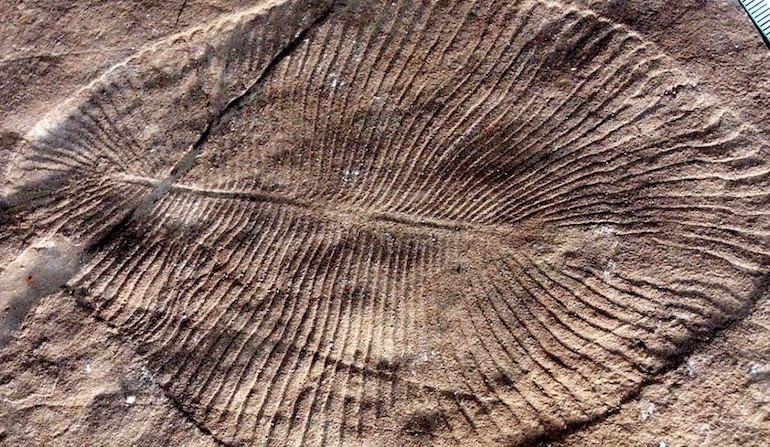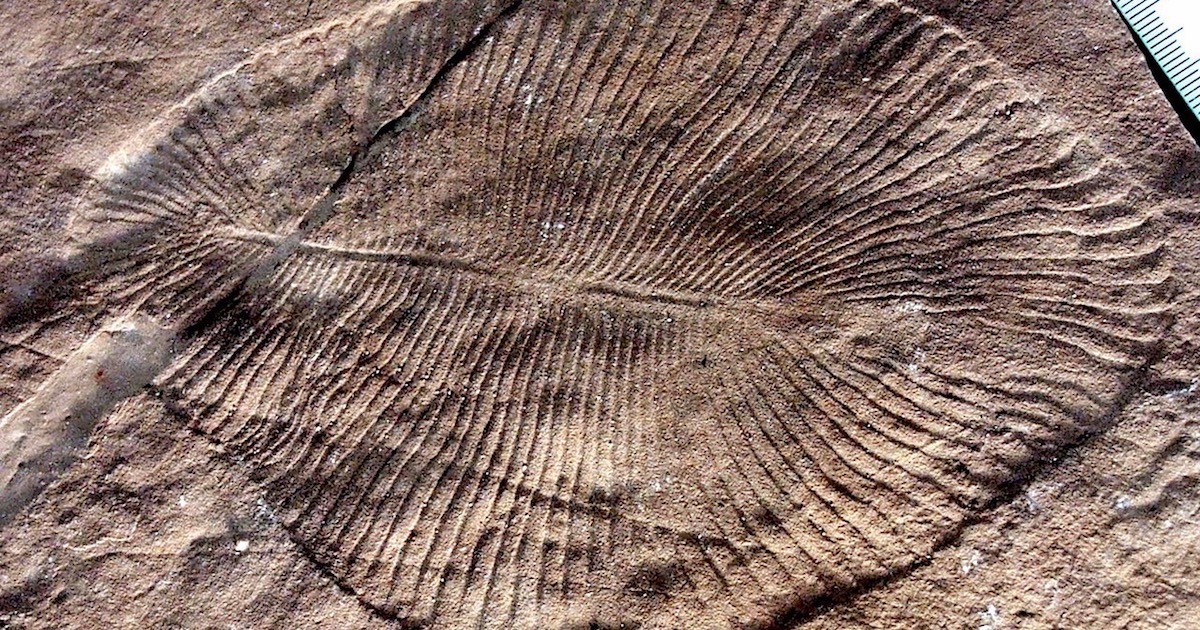 Evolution
Evolution
“Ice Cube” Study of Ediacaran Fossils Is Junk Science


The enigmatic Ediacaran biota preceded the Cambrian explosion and represent the first assemblage of macroscopic organisms in the fossil record. In a somewhat lengthy article at Evolution News (Bechly 2018) I recently elaborated on the alleged evidence for Ediacaran organisms like Dickinsonia as the earliest animals, and demonstrated that all this evidence is either obsolete, misinterpreted, or at least highly controversial and dubious. I concluded that that these organisms most likely were not animals and thus were not transitional to the Cambrian animal phyla.
Casts of an Endoskeleton?
Now, a new study on Ediacaran fossils has appeared in the journal Nature Ecology & Evolution. It was reported under sensational headlines, including “Death Star ice cube reveals how the world’s oldest fossils may have formed” (Vogel 2019) and “Mystery shrouding oldest animal fossils solved” (ANU 2019). Wow, this sounds important. Let’s find out.
The main authors are Russian doctoral student Ilya Bobrovskiy and Professor Jochen Brocks from the Australian National University, who also published the Science paper last year that claimed to provide decisive biochemical evidence for an animal nature of Dickinsonia. However, in my article mentioned above, I argued that this evidence was far from convincing. What about their new paper?
In this new study the authors discuss the mode of preservation of Ediacaran fossils, and they document taphonomical laboratory experiments. In these experiments the scientists enclosed pieces of corrugated cardboard in small ice blocks and put them in a sedimentational environment that mimics the supposed conditions in the Ediacaran biota. They found that due to the rheological behavior of the over- and underlying sediments, the generated artificial “fossil” impressions in the sediment did not preserve the original shape of the ice block but only of the enclosed piece of card board. They propose the melting of the ice block as a model for a decaying soft-bodied organism. The authors claim that their experiments suggest that Ediacaran fossils like Dickinsonia might only represent casts of an endoskeleton and not necessarily of the external shape of the original organisms. They conclude:
The mechanism also implies low preservation potential for mouths and guts (unless these are filled with sediment to form a composite impression, which sometimes seems to be the case for Kimberella and potentially for some dickinsoniid specimens) and other soft tissues, making conclusions based on their perceived absence meaningless.
For the Sake of Argument
Let’s first assume that the authors are right. Does the study provide any new evidence that Dickinsonia is an animal? No! Does the study provide any evidence that internal organs were simply not preserved but were present in the living organism? No! Does the study provide any kind of clue to solve the enigmatic affinities of the Ediacaran organisms? No! The best they can reasonably claim is that the inferred mode of preservation does not exclude any of the suggested identifications, which range from giant protists, to an extinct independent branch of multicellular life, to lichens, fungi, placozoans, jelly fish, worms, and stem bilaterian animals.
But are the authors right that Dickinsonia fossils could be just casts of an endoskeleton and that we are ignorant about the external shape of the actual organism? The answer again is clearly negative, and here is why.
Nails in the Coffin
1) Dickinsonia is often preserved with other organisms like Kimberella that unequivocally show soft-body preservation of the whole organism. Consequently, it is clearly false that only the endoskeleton but not the external body shape of Dickinsonia could be preserved. The fact that other organisms in the same outcrops show soft-body preservation of the whole organism also refutes the assumption of the authors that their ice-cube experiments are a suitable model of the Ediacaran fossilization process. This fact alone totally demolishes the whole study, and I indeed wonder how it made it through peer review into a Nature journal while suffering from such an obvious defect.
2) Dickinsonia shares the unique glide symmetry with other Ediacaran organisms such as the frond-like Erniettomorpha or Petalonamae, to which Dickinsonia is often attributed. These frond-like fossils are preserved as complete organisms with stalk and holdfast. So why should they be preserved as whole organisms, and the related Dickinsonia only as endoskeleton, under the same environmental conditions? And why should the endoskeleton of Dickinsonia look like the whole body of the “fronds,” while the latter lack any preserved endoskeleton unlike their relative Dickinsonia? This makes no sense at all.
3) A further nail in the coffin of this new study are the numerous trace fossils of Dickinsonia that have either been interpreted as feeding traces or as serial imprints of a drifting body. Now, are we supposed to believe that the endoskeleton of an Ediacaran organism could be preserved more than once (after all the authors discuss casts not imprints)? That would be like finding several skulls of Mozart. Surely you’re joking, Mr. Bobrovskiy.
4) Finally, if Dickinsonia fossils were just casts of an endoskeleton, they would be even more “alien” than previously believed. We know of not a single group of fossil or living organisms with such an endoskeleton that has glide-symmetry and a serial growth pattern with addition of segments. This feature would contradict all of the many suggested affinities of Dickinsonia, and it has certainly never been suggested to be a ground plan character of animals by any evolutionary biologist ever.
In brief: This new study is a ridiculous piece of junk science that should never have been published in a serious journal. My previous conclusion concerning Dickinsonia and its Ediacaran relatives still stands: they are most likely not animals and they lack any animal features not because they were no preserved, but because they were not there.
References
- ANU 2019. Mystery shrouding oldest animal fossils solved. Science Daily March 25, 2019.
- Bechly G 2018. Why Dickinsonia Was Most Probably Not an Ediacaran Animal. Evolution News, September 27, 2018.
- Bobrovskiy I, Hope JM, Ivantsov A, Nettersheim BJ, Hallmann C, Brocks JJ 2018. Ancient steroids establish the Ediacaran fossil Dickinsonia as one of the earliest animals. Science 361, 1246–1249.
- Bobrovskiy I, Krasnova A, Ivantsov A, Luzhnaya E, Brocks JJ 2019. Simple sediment rheology explains the Ediacara biota preservation. Nature Ecology & Evolution 3, 582–589.
- Vogel G 2019. Death Star ice cube reveals how the world’s oldest fossils may have formed. Science News, March 26, 2019.
Image: Dickinsonia costata, by Verisimilus at English Wikipedia [CC BY-SA 3.0], via Wikimedia Commons.
